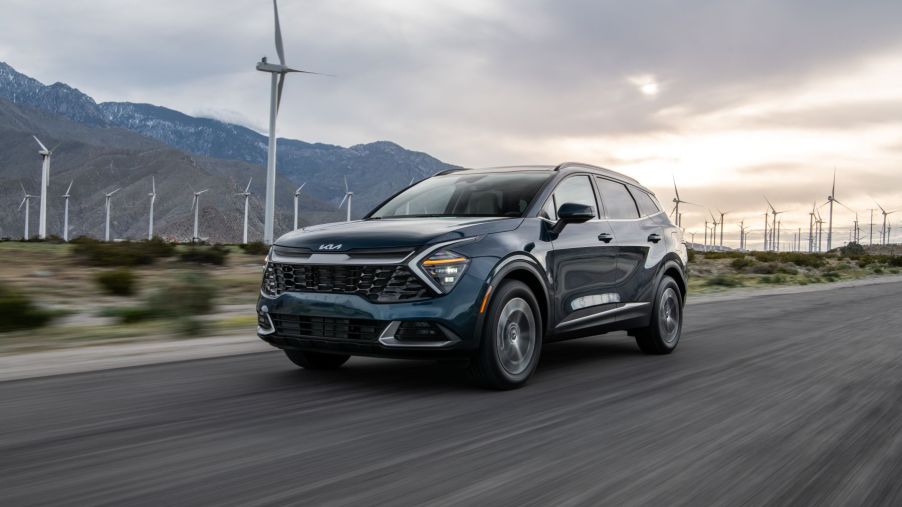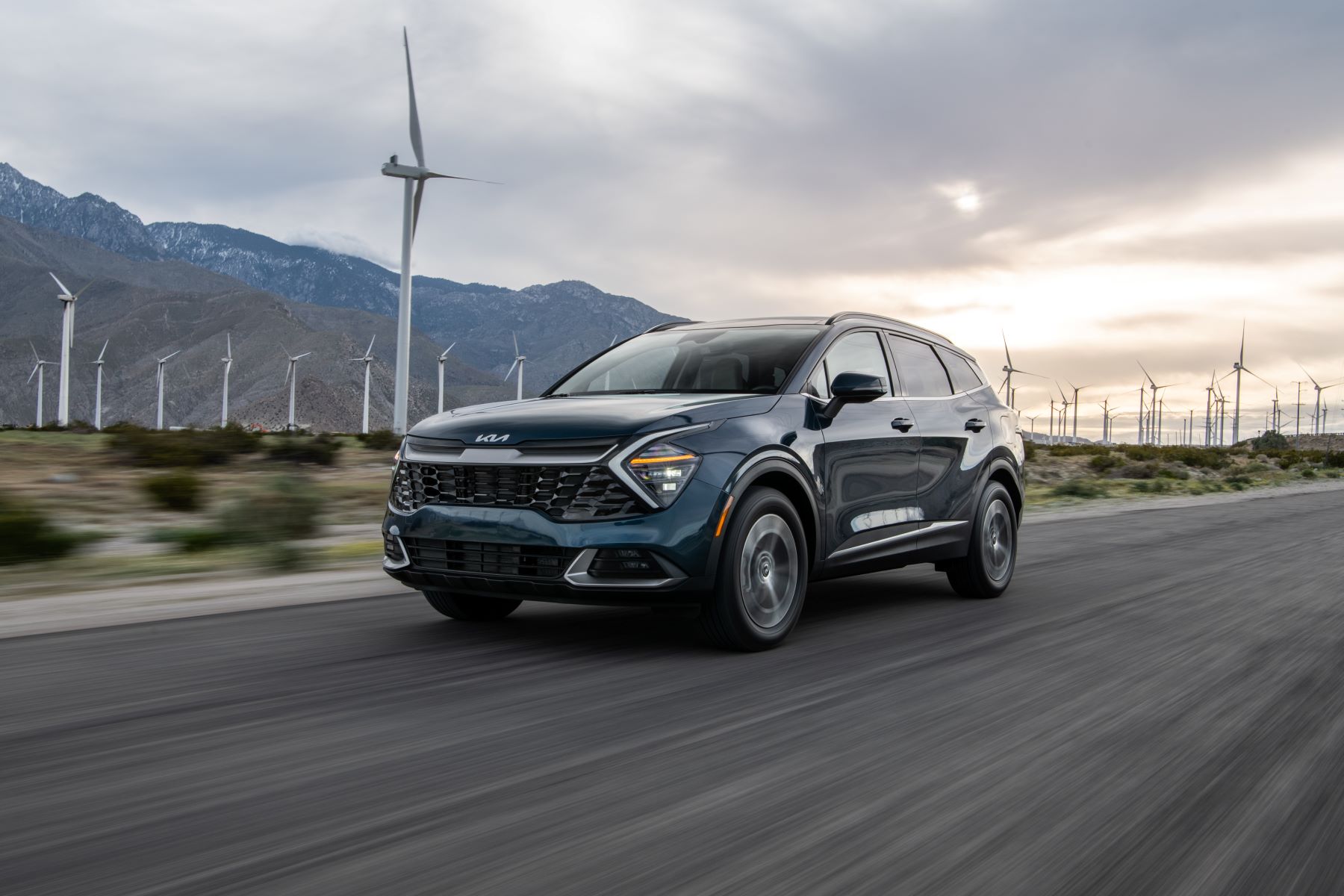
The 2023 Kia Sportage Has 1 Advantage Exclusive to Its Hybrid Model
Arguably, the most exciting thing about the Kia Sportage redesign is its newly-available hybrid models. The hybrid version has a peppy turbo-four engine paired with an electric motor, producing 227 hp and 258 lb-ft of torque. That’s 40 ponies and 80 lb-ft of torque over the regular Sportage.
Along with its upgraded powertrain, a Kia Sportage Hybrid will undoubtedly save you money at the pump. That’s its biggest advantage, but does owning a hybrid have any downsides? Let’s see what Consumer Reports had to say.
Every 2023 Kia Sportage has these great qualities
Whether you get the hybrid or internal combustion engine (ICE) Kia Sportage, you can expect a steady ride. According to Consumer Reports, both models are good at keeping body lean under control. The brake pedal is easy to operate, and the suspension does an excellent job absorbing bumps in the pavement.
The 2023 Kia Sportage also features a cozy, spacious interior. It’s better than its last generation because of the extended wheelbase, which now sits at almost 109 ft, according to Edmunds. That translates into over 41 inches of rear legroom and almost 40 cubic feet of cargo area behind the rear seats.
CR also appreciated the new Sportage’s reclining rear seatbacks and the generous leg cushioning provided. The driver’s seat can’t offer as much long-term support, but it’s still more comfortable than it looks. CR recommends springing for the EX trim, which grants drivers extra adjustability options and lumbar support.
The Kia Sportage lacks a drastically sloping roofline and has wide door openings, making it easy to enter and exit the car. CR also says that the Sportage’s interior quality is competitive for its price point, and even the plastic elements look polished.
How efficient is the 2023 Kia Sportage Hybrid?

According to Car and Driver, the EPA rates the 2023 Kia Sportage Hybrid for 42/44 mpg city/highway. That’s 43 mpg combined with FWD equipped: switching to AWD drops its mileage down to 38 mpg combined. However, the FWD Kia Sportage Hybrid managed only 36 mpg combined during real-world testing.
For comparison, the gas-powered Kia Sportage can earn up to 25/32 mpg with FWD. If you have an AWD model, you might only get 23/28 mpg at best. Although it exceeded its highway estimates on CR’s test drive, the regular Sportage only managed 17 mpg on city roads.
Problems with the Sportage Hybrid
Like many hybrids, the Kia Sportage Hybrid sacrifices some performance for its fuel-sipping nature. While Consumer Reports testers appreciated the Sportage Hybrid’s even power delivery, they wished it was a little faster.
The Sportage Hybrid needs 7.7 seconds to reach 60 mph. Testers also found that the transmission pauses between downshifts, making highway driving a chore. Still, it’s worth noting that the Sportage Hybrid is faster than the regular Sportage, which needs 10 seconds to hit 60 mph.
The Sportage Hybrid also includes an all-new gear selector, but CR’s testers hated it. It uses a rotary dial setup instead of the traditional lever, so there’s a bit of a learning curve involved. You also have to press a button in the center whenever you want to park the vehicle.
CR also noted that the Kia Sportage Hybrid required extra stopping distance on dry and wet pavement. You have to plan your braking maneuvers well in advance, thanks to the sponginess of the pedal. The hybrid engine can also become noisy when pushed to its limits, especially on the highway.
Even with those grievances, the Sportage Hybrid’s elevated fuel economy is a great incentive to buy one. A Kia Sportage PHEV will also arrive later this year, available exclusively as an AWD model.


